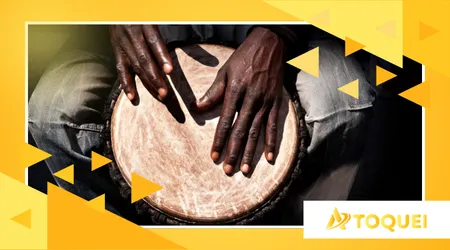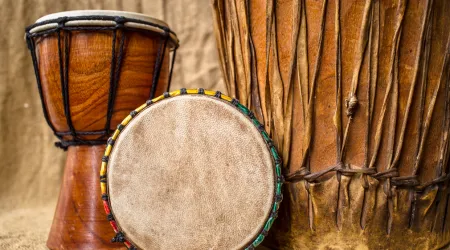Mina Drum: African Tradition in Maranhão

THE Mina Drum It is not just a religious manifestation; it is a sonic portal to the deep history of Maranhão, a Brazilian state where African ancestry flourishes with unparalleled vitality.
Advertisements
This tradition, forged in the flames of slavery, has transcended time and established itself as one of the pillars of Maranhão's cultural identity.
The sound of their drums not only evokes the ritual, but also narrates the saga of a people who knew how to preserve their faith.
How did Tambor de Mina take root in Maranhão culture?
The genesis of the cult lies in the arrival of enslaved people, especially those from the Costa da Mina.
They brought with them the Voduns, deities of the Jeje pantheon, and the complex ritual structure of their homelands.
Advertisements
The name "Mina" refers to the region of São Jorge da Mina Castle, in present-day Ghana. The religion flourished in historic terreiros, such as Casa das Minas and Casa de Nagô, in São Luís.
Such spaces became centers of resistance and cultural maintenance.
This religion developed in a particular and discreet syncretism, blending elements of African and Amerindian worship and popular Catholicism.
Popular Catholicism served as a protective disguise during colonial repression. Voduns, for example, were associated with Catholic saints in an ingenious process.
This strategy ensured the survival and perpetuation of the cult throughout the centuries.
Read more: What is a matraca and how is it used in Brazilian folklore?
Why is the Sound of Musical Instruments Vital in Tradition?
Music is the backbone of Mina Drum; is the vector of communication with the sacred.
The instruments are not mere accompaniments, but voices that call, revere, and guide the entities. Without precise touch, the ritual loses its power and connection.
The instrumentation is distinctive and varies according to the nation of the terreiro, with percussion being the central element.
In the Mina-Nagô tradition, the abatas Double-membrane drums are crucial. In other terreiros, it's possible to find the "mata drum," a single-membrane instrument.
This forest drum suggests a connection with Terecô and Bantu traditions.
| Main Instrument | Nation/Association | Ritualistic Function |
| Abatá (Two Leathers) | Mina-Nagô (and others) | Call Voduns and Encantados |
| Drum of the Forest (A Leather) | Beta/Terecô (and others) | Brings the energy of the Caboclos |
| Caxixi, Agogo | General (monitoring) | Sets the rhythm and cadence of the songs |
It's like the key to an ancient door: without the exact key, the door remains locked. The sound, rhythm, and cadence of the chants and drums open the spiritual dimension.
++ Rebolo, tantan and repique de mão: differences and uses in pagoda
What Elements Characterize the Contemporary Tambor de Mina Ritual?
The rituals, known as "toques" or "festas," are events of intense spirituality and social cohesion. Possession by Voduns, Encantados, or Caboclos is a prominent feature.
The dance, circular and continuous, serves to manifest the sacred. The goal is healing, guidance, and the maintenance of cosmic balance.

A striking example of this complexity is the spiritual hierarchy. The Jeje Voduns are at the top, followed by the touchstones for the Encantados.
The latter are Brazilian spiritual entities, often linked to nature. There is a diversity of secret lines and foundations that dictate the rites of each house.
Another aspect is discretion: the initiation rituals of the Mina Drum are closed and conducted in a private manner.
Unlike other religions, fanfare is avoided, maintaining an aura of mystery and seriousness. This modesty has helped protect the religion.
++ Typical frevo instruments: a beginner's guide
What is the Social Impact and Current Relevance of Religion?
THE Mina Drum transcends the religious sphere, acting as an important social and cultural vector. Terreiros are spaces of solidarity, cooperation, and leisure for the community.
A recent study, published in 2025, analyzed the social role of a Mina terreiro. The research highlights how religious experience strengthens bonds of belonging and shapes subjectivities.
Religion is a force of resistance against racism and intolerance. In the ever-changing Brazilian religious landscape, Afro-Brazilian religions, such as Mina Drum, remain active.
Relevant statistics from the 2010 Census (latest detailed data available) indicate that followers of Umbanda and Candomblé remained at 0.3% of the Brazilian population.
Although the Census does not detail Mina separately, this stability suggests resilience in the face of the growth of other faiths.
A practical example of its relevance is linguistic and musical preservation. Many songs still contain African terms, such as Jeje, keeping an intangible heritage alive.
Imagine a secular library: every corner is a book. The Mina Drum is this living library in Maranhão. Isn't it wonderful that, amidst so many influences, this flame remains lit?
Conclusion: The Continuity of a Powerful Legacy
THE Mina Drum Maranhão is an eloquent testament to the human capacity to maintain faith and identity.
The terreiros continue to be beacons that radiate spirituality, culture and resistance.
Preserve the Mina Drum It is more than maintaining a rite; it is ensuring the integrity of one of the richest African heritages in Brazil.
This resilient and adaptable tradition continues to beat strongly in the heart of Maranhão, projecting its light into the future. The sound of the drum will continue to echo for many generations.
Frequently Asked Questions
What is the Jeje Mina Drum?
It is one of the main “nations” or branches of the cult, centered on the worship of Voduns, deities of Jeje origin (ancient Dahomey, present-day Benin), as seen historically in the Casa das Minas.
Are Tambor de Mina and Umbanda the same thing?
No. The Mina Drum It is a distinct Afro-Brazilian religion, with a strong Jeje and Nagô presence, and worship of Voduns and Encantados.
Umbanda is a Brazilian syncretic religion, which was formed later, but both can interact in some homes.
Is there a Mina Drum outside of Maranhão?
Yes. Although Maranhão is the main center, the religion also has followers and terreiros in Pará, the Amazon, and other regions, such as São Paulo and Minas Gerais, demonstrating its expansion.
